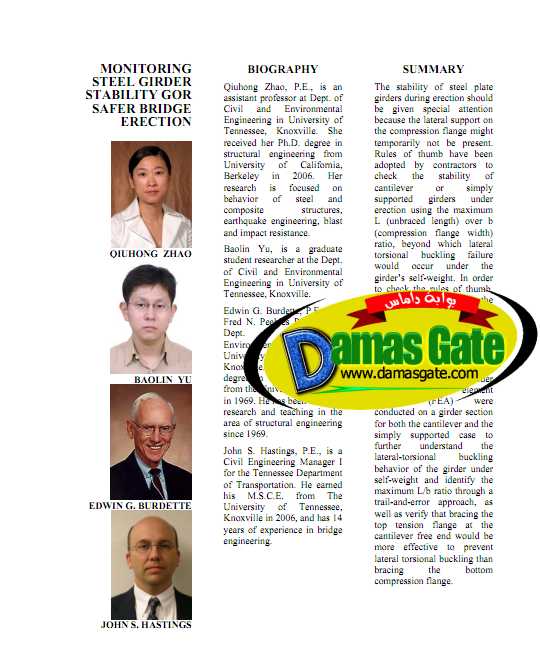Monitoring Steel Girder Stability
Introduction and Background
Steel girders in a bridge are vital structural components, which resist most of the gravity loads applied to the bridge deck through bending and shear. In many cases, the steel girders work together with the bridge concrete deck above and form a composite section, which increases the girder strength as well as its stability, since continuous lateral support will be provided to the top compression flange. For cases where the top flange is not connected to the bridge deck, cross frames are usually installed between the steel girders in order to provide discrete lateral support to the top compression flange. In general, lateral movement of the top compression flange of the steel girder under service loading is prevented, and lateral torsional buckling failure is not likely to happen.

However, the situation is different for a bridge girder under construction since it is installed before the concrete deck is added or before cross frames are installed. The steel girder at this stage is subjected to construction loading, including self-weight of the girder, weight of construction equipment, or weight of construction workers, etc. Although the magnitude of the construction load could be much smaller than the service load, the composite action with the concrete deck and the continuous or discrete lateral supports to the girder compression flange are not available at this stage. Therefore, the construction loading may pose a more critical condition on girder stability compared to the service condition, and the steel bridge girder may experience instability and lateral torsional buckling failure if not enough lateral support is provided, which may cause collapse of the whole steel superstructure, as shown in the collapse of the State Route 69 Bridge over the Tennessee River on May 16, 1995. Due to the matching problems with the connection to one of the girders, a cross-frame was removed, which resulted in a large unbraced length of 200 ft, doubled from the original unbraced length of 100 ft for the girder. The entire bridge collapsed during the operation to realign the girder and obtain the required fit-up (13), which killed 1 construction worker, injured several others, and delayed completion of the construction for months (10). A view of the bridge after collapse is shown in Figure 1.
Download
http://s18.alxa.net/s18/srvs2/02/002....Stability.rar